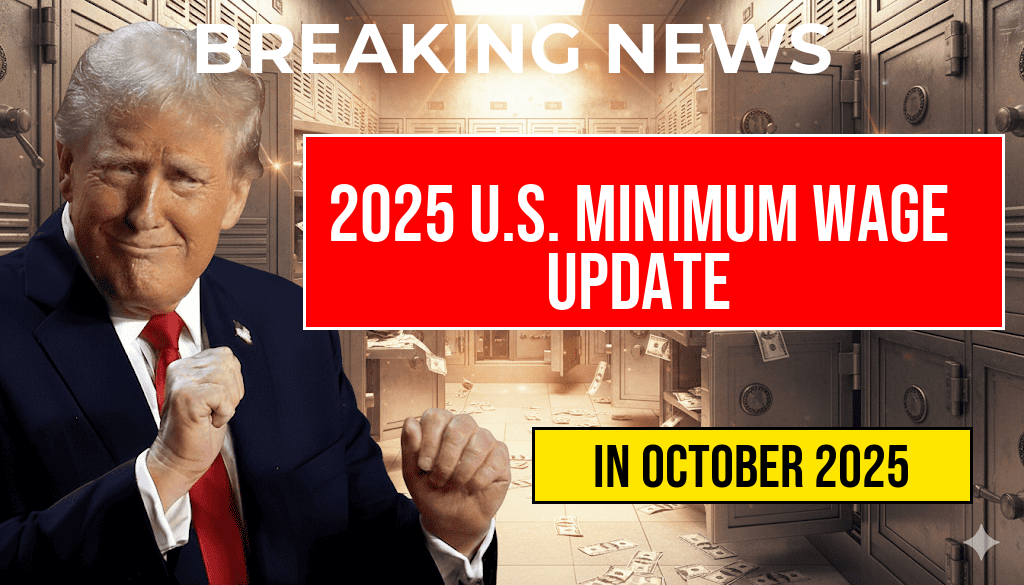Effective October 4, 2025, the United States will see a nationwide update to its minimum wage rates, marking a significant shift for workers across various sectors. The new federal minimum wage will increase from $7.25 to $8.50 per hour, the first adjustment since 2009, reflecting ongoing efforts to address wage stagnation and cost-of-living concerns. Several states and localities also announced their own adjustments, resulting in a patchwork of pay rates that vary considerably depending on geographic location. The change aims to bolster income levels for low-wage earners amid inflationary pressures, while businesses prepare for the economic ripple effects. This update has sparked debates among policymakers, economists, and labor advocates about its potential impacts on employment, prices, and economic growth. As the nation transitions into this new wage landscape, understanding where and how these changes will be implemented remains crucial for both workers and employers.
Federal and State Minimum Wage Changes for 2025
Federal Wage Adjustment
| Year | Minimum Wage |
|---|---|
| 2024 | $7.25 |
| 2025 (Effective October 4) | $8.50 |
The federal minimum wage, mandated by the Fair Labor Standards Act, has remained unchanged at $7.25 since 2009. The upcoming increase to $8.50 marks a notable shift, driven by congressional legislation aimed at gradually raising wages. While this increase applies to federal contract workers and certain other categories, many states and cities set their own minimum wages higher than the federal baseline, leading to a diverse wage landscape across the country.
State and Local Variations
Numerous states and municipalities have set their own minimum wages, often exceeding the federal figure. For example:
- California: $15.50 per hour (scheduled to increase to $16.00 in 2026)
- New York: $15.00 per hour in New York City, with other regions varying between $13.00 and $14.50
- Florida: $12.00 per hour, with plans to reach $15.00 by 2026
- Texas: $7.25 per hour (matching federal, no scheduled increase)
State legislatures in some regions have yet to pass legislation to raise wages, leaving workers in those areas subject to the federal minimum. The disparity underscores ongoing debates over how best to address income inequality nationwide.
Implications for Workers and Employers
Impact on Low-Wage Workers
The wage hike is expected to benefit millions of low-income Americans, providing additional purchasing power and potentially reducing reliance on government assistance programs. Labor advocates argue that increasing the minimum wage can lead to improved job satisfaction, lower turnover, and a reduction in poverty levels. However, some economists caution that higher labor costs could lead to reduced hiring or increased automation, especially for small businesses operating on thin profit margins.
Business Responses and Adjustments
Many employers are preparing for the wage increase by adjusting their payroll budgets and reevaluating staffing levels. Larger corporations with more substantial resources may absorb the costs more easily, while small businesses might consider price adjustments or operational changes. Retail chains, hospitality providers, and service industries are particularly attentive to these changes, as they constitute a significant portion of minimum-wage workers.
Economic Perspectives and Policy Debates
Economic Impact Studies
Research on minimum wage increases yields mixed results. Some analyses suggest that modest hikes improve workers’ living standards without significantly affecting employment levels. Others warn that abrupt increases could lead to higher prices for consumers or reduced employment opportunities. The Congressional Budget Office (CBO) estimates that raising the federal minimum wage to $10.10 by 2026 could lift 1.3 million Americans out of poverty but might also result in 1.4 million job losses.
For a comprehensive overview of economic effects, see Wikipedia’s page on minimum wage economic impact.
Policy Debates
Proponents argue that increasing the minimum wage is essential for ensuring a fair standard of living and reducing income inequality. Critics contend that wage hikes could hurt small businesses and lead to higher unemployment, especially among young and unskilled workers. The ongoing policy debate reflects broader disagreements over the role of government intervention in labor markets.
Looking Ahead
As the October 4 implementation date approaches, both workers and employers are preparing for the transition. State governments may also introduce additional measures to further adjust wages, with some regions planning incremental increases over the next few years. The federal wage increase is viewed as a step toward addressing long-standing concerns about low pay, though its effectiveness will depend on how businesses and workers adapt in the evolving economic climate. Stakeholders are closely monitoring the outcomes, with many anticipating further legislative proposals aimed at addressing wage disparities and economic resilience across the nation.
Frequently Asked Questions
What is the new minimum wage rate effective October 4, 2025?
The minimum wage in the United States will be updated to $15.00 per hour starting October 4, 2025, impacting various states and industries nationwide.
Which states are affected by the 2025 minimum wage update?
The minimum wage increase applies to several states that have scheduled increases for 2025, including California, New York, Washington, and Massachusetts, among others. Employers should verify specific rates based on their location.
Are there any exceptions or special rules for certain industries or employees?
Yes, certain industry-specific exemptions and employee classifications may apply, such as tip workers or youth employees. Employers should consult state and federal regulations to ensure compliance.
How will this update affect employers and employees?
The increase in hourly pay rates aims to improve living standards for workers and may influence labor costs for employers. Businesses should prepare for the wage change by updating payroll systems accordingly.
Where can I find detailed information about the 2025 minimum wage rates?
Detailed information can be found on official government websites such as the U.S. Department of Labor and respective state labor departments, which provide comprehensive updates and compliance guidelines.






